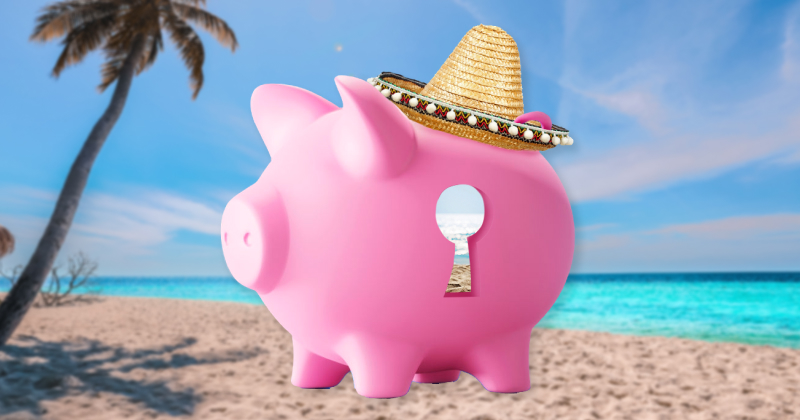

Kos Travel Guide
Welcome to the Holiday Extras Kos travel guide – the best place to find out everything you need to know about this gorgeous Greek island before you go.
What you'll find in this guide:
Practical Information
Getting to Kos
Getting around Kos
Top things to do in Kos
Where to stay in Kos
Where to eat in Kos
Practical Info
GMT +2
Euro EUR
Greek
Type C and F
Avg 4 hrs
Kos is a relatively small island in the Aegean Sea, and part of the Dodecanese, which means 'the twelve islands' – even though there are 15 major islands in the chain and around 100 smaller ones! It's the third largest of Dodecanese, after Rhodes and Karpathos, but only around 25 miles across and 5 miles wide.
It's famous for its numerous rocky capes and white sandy beaches, which attract thousands of visitors every year. That's not to mention the millennia of history, from the ancient Greeks and Romans, to the Ottoman Empire.
What's the weather like in Kos?
Kos has Mediterranean climate, meaning nice, hot summers and mild winters. In July and August the temperature can get up to the 30Cs and rarely drops below 20C, even at night. The sea is the ideal temperature at this time too at a balmy 24C.
Money in Kos
As part of Greece, the official currency of Kos is the euro. A tip of 10-15% is common for good service. Although some restaurants popular with tourists add a service charge so be sure to check the bill first.
What language to they speak in Kos?
English is widely spoken across the island, especially in areas popular with tourists. But it's always handy to learn some of the language before you go. Here are some Greek phrases to get you started:
- Hello (informal) - Yassou (ya-sou)
- How are you? - Ti kanis? (ti-kanis)
- What's your name? - Pós se léne? (poss-eh-len-eh)
- My name is - Me léne (me len-eh)
- One - Ena
- Two - Dio
- Three - Tria
- Four - Tessera
- Five - Pende
- Please - Parakaló (para-kalo)
- Thank you - Efharistó (ef-ha-risto)
- Table for two - Trapézi gia dýo (tra-pezi jiya dio)
- The bill, please - Ton logariasmó, parakaló (ton-lo-ga-ria-smo, para-kalo)
- Goodbye - Antio (antio)
Top
Getting to Kos
Can you fly direct to Kos?
The easiest way to reach Kos is by air, but direct flights to the island largely only run in the summer months. You can fly direct from London Gatwick from around the end of March. At quieter times of the year you will need to take a direct flight to Athens and then an domestic flight, usally with Olympic or Agean airlines. The internal flight is around 1 hour.
The island's location in the Dodecanese also makes it perfect for island hopping, as it can be reached by ferry from many other islands as well as Athens. It does take about 10 hours to reach Kos from Athens by ferry, but it's a scenic journey that passes many islands along the way.
What are the best ways to travel around Kos?
As it's the largest of the Greek islands, knowing how to get around is key to making the most of your stay here.
By car
Hiring a car is an efficient way of getting around Kos, but as with many Greek islands the roads can be very narrow, especially in more rural areas. Often the more remote roads only have one lane for traffic, so make sure you slow down or pull over if necessary to allow oncoming cars to pass.
Kos has one main road that links the capital, Kos Town, with the south of the island. Most other roads will connect to this one at one point or another, leading to the resorts, villages and attractions of the island.
By bus
There are two kinds of buses in Kos, and which one you catch depends on your destination. If you want to explore Kos Town or the immediate area you'll need to catch a city bus.
The small city buses follow short routes through the city and along the main roads that lead to the resorts on the outskirts. They can also take you to some of the local attractions like the ruins of the Asklepieion.
If you're travelling further afield you'll need to catch an island bus. These larger buses connect Kos Town to the airport and the bigger beach resorts.
By bike
The island's flat coastal areas, as well as Kos Town, lend themselves well to exploring by bike. The town itself has plenty of bike paths, some of which will take you beyond the town and along the coast.
Cycling is a very popular activity on the island and there are plenty of facilities along the routes, along with a mix of tame and challenging routes to suit your level. It's easy to hire a bike too, with most hotels able to sort it out for you.

Kos Airport Transfers
Pre-book your Kos Airport transfers, with prices starting from just £4.31pp with FREE cancellations*

Kos Car Hire
Pre-book your Kos Airport car hire, with prices starting from just £13.07 per day with FREE cancellations*
Top places to visit in Kos

The Asklepion
A few miles south-east of Kos Town, near the village of Platani, lie the fascinating ruins of the Asklepieion – an ancient Greek medical centre that dates from the 3rd century BC.
Its name comes from the ancient Greek god of medicine, Asklepios. Keep an eye out for the symbol of a snake as you explore, as snakes were linked to medicine in ancient Greece because they believed they had an ability to seek out medicinal herbs.
The site lies on the top of a hill, so as you explore the remains of what would've been baths, temples, and even a medical school, you can enjoy some stunning views over Kos Town and the surrounding area.

Kos Town
Kos Town is the capital of the island as well as its cultural and historical centre and hub of tourism.
The island was home to the ancient Greek physician Hippocrates, the 'father of medicine', who revolutionised medical science in ancient Greece and influenced its development in the centuries that followed. It's said that he studied under a tree in the centre of the town, which is still there to this day. In reality the tree is "only" 500 years old, but it's symbolic nonetheless.
Learn more about the legacy of the ancient Greeks at the archaeological museum, or explore the city to discover its fascinating mix of architecture, from ancient to modern. A particular highlight is the Castle of the Knights of St John, which once defended the town from pirates.

Thermal springs
Just beyond Thermes Beach on the south coast you'll find a collection of pools of naturally heated water. The temperature can reach up to 50C – that may sound a bit too hot but don't worry, the water mixes with the sea to create varying levels of temperature among the separate pools.
The water is filled with minerals like magnesium, calcium and potassium, which are said to help with arthritis, rheumatism as well as being good for the skin. The water also contains sulphur, but don't let the smell put you off!
Where to stay in Kos
Kos Town
As the island's capital, Kos Town is a lively place that combines the best of the island's resorts into one. Most resorts are within walking distance of the beach and have easy access to the city's heritage attractions.
Plus Kos Town has a lively collection of restaurants, bars and clubs, so if you want a night out you won't have far to go. The beach is close by too, for when you need to rejuvenate yourself the next morning.
Kefalos
Kefalos lies on the south-west side of the island about 40km from Kos Town. This delightful town of narrow streets and stone buildings is popular with visitors thanks to its traditional charm. And even though there are plenty of beach hotels and resorts, the town has kept its authentic feel.
Kardamena
Kardamena is the place to go if you want to experience the best of the island's nightlife. It's about half an hour southeast of Kos Town and boasts a 3km beach backed by resorts, tavernas and restaurants, as well as a lengthy strip filled with bars and a few clubs. There's also a scenic harbour area which comes alive at night.
What to eat in Kos
The cuisine in Kos is similar to the rest of Greece but with local variations on Greek classics. One particular speciality is posa cheese, which is made from goat's milk and matured in red wine, giving it a distinctive colour and flavour.
Another popular local dish is pitaridia – strips of freshly made pasta cooked in stock, often served with grated cheese or a tomato sauce. You should also try local honey flavoured with thyme, which pairs nicely with katimeria, or fried cheese pies.
There are plenty of wines made on the island too if you're keen to try the local tipple, and of course lots of ouzo.
TopBest beaches in Kos
Kos is famous among the Dodecanese, and all the Greek islands, for its stunning beaches. There are more than 20 beaches dotting the coastline, many offering something different from the last.

Agios Stefanos
If you're looking for the ideal place to roll out your towel and relax, the beach at Agios Stefanos is ideal, with its soft sand and shallow water.

Kefalos
Want watersports? Try the beaches at Kefalos or Kardamena, which offer scuba diving, windsurfing, snorkelling and more.

Marmari Limnaria
Marmari Limnaria in the north of the island is an ideal spot for surfing and windsurfing due to the strong winds there.










